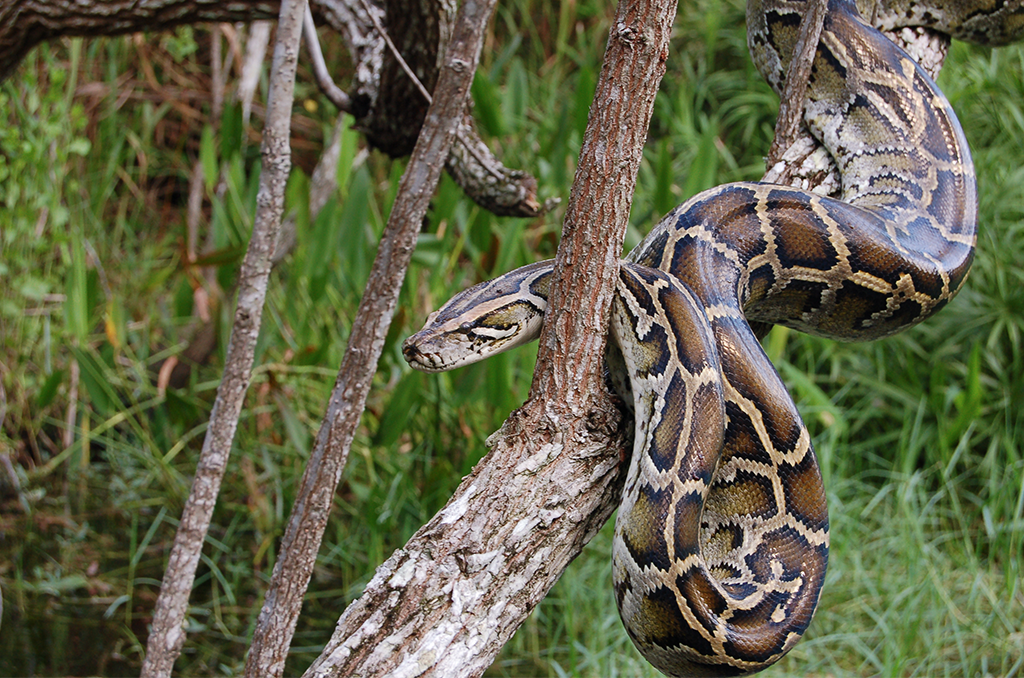Burmese Pythons — Courtesy: Shutterstock — Heiko Kiera
Following several years of close speculation, invasive Burmese pythons have been spotted making their way up north in Florida.
“We have finally, unhappily, sighted a Burmese python in the interior of the refuge,” University of Florida wildlife professor Frank Mazzotti, who heads Fort Lauderdale’s Croc Docs research team, told The Palm Beach Post.
Wildlife researchers and biologists previously believed that the invasive species was located in the area after detecting its DNA in freshwater in the Arthur R. Marshall Loxahatchee National Wildlife Refuge. However, South Florida Water Management District contractors caught a glimpse of the snakes in the refuge in late October.
“We know they are in the refuge but haven’t been seeing them and once you start seeing them that is an indication that the population is expanding,” Mike Kirkland, an invasive animal biologist, told The Palm Beach Post. “The fact that we’ve had a few sightings recently leads me to believe there are more there.”
The Burmese python is not native to Florida, although the invasive species started to overrun the South Florida Everglades in the 1980s, originally brought into the U.S. as an exotic pet. Since then, the invasive snake has overpopulated and continued to spread further and further throughout Florida.
Due to its incredibly large size, the Burmese python has very few natural predators, preying upon other snakes, alligators, and even pets, decimating the populations of native species in the area.
To put a halt to the growing snake population and spread, Florida allows for Burmese pythons to be removed and humanely killed on private islands with the owner’s permission. They are also hunted on 25 wildlife management areas year-round.
In the refuge, it is reported that hunters can now receive a total of $15 per house, as opposed to $10 an hour in other South Florida areas, to hunt the pythons. An additional $50 is given per python measuring four feet or longer, and $25 per foot after four feet to incentivize hunters.
“We don’t expect them to capture a lot of pythons because the populations are very low in the refuge compared to other project areas,” Kirkland said. “We want to keep it that way and that’s why we give the extra incentive for contractors to service that area.”
The fight against the invasive species continues.
Are you interested in Florida’s nature? For stories like this and much more: Florida Insider is dedicated to educating, entertaining and informing its readers about everything Florida. Easy to read content at the palm of your hands and covering the stories that matter.

